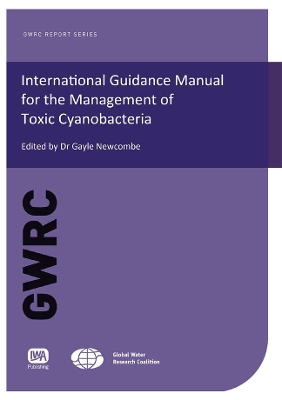GWRC Report
1 total work
International Guidance Manual for the Management of Toxic Cyanobacteria
by Gayle Newcombe
Published 14 August 2012
Available as eBook only.
Cyanobacteria are a concern for water authorities worldwide as their persistence in water supplies causes numerous problems for water treatment plants. However, the major concern associated with the presence of cyanobacteria is the metabolites they produce, taste and odour compounds, particularly 2-methyl isoborneol and geosmin, and a range of toxic compounds known collectively as algal toxins, or cyanotoxins.
The management of cyanobacteria and cyanotoxins is one of the priority issues in the research agenda of the Global Water Research Coalition and this international guidance manual aims to consolidate the available knowledge and information: to understand the importance of cyanobacteria and the toxins they produce to assess the risks associated with a particular water source to develop a monitoring program and incident management strategies consistent with the WHO Water Safety Planning process to instigate management procedures both in the source water and treatment plants to mitigate the risks posed by the presence of toxic compounds in drinking water.
The International Guidance Manual for the Management of Toxic Cyanobacteria is a user-friendly document that can be accessed on several levels, from basic information for the water quality manager who knows very little about cyanobacteria, to those requiring more detailed guidance on, for example, source water management methods, or doses of activated carbon required to reduce toxin concentration to below the WHO guideline. It is hoped this manual is accessed by water utilities world-wide, and feedback on its application will be used to update and implement revisions to maintain and enhance its usefulness to the international water industry.
Cyanobacteria are a concern for water authorities worldwide as their persistence in water supplies causes numerous problems for water treatment plants. However, the major concern associated with the presence of cyanobacteria is the metabolites they produce, taste and odour compounds, particularly 2-methyl isoborneol and geosmin, and a range of toxic compounds known collectively as algal toxins, or cyanotoxins.
The management of cyanobacteria and cyanotoxins is one of the priority issues in the research agenda of the Global Water Research Coalition and this international guidance manual aims to consolidate the available knowledge and information: to understand the importance of cyanobacteria and the toxins they produce to assess the risks associated with a particular water source to develop a monitoring program and incident management strategies consistent with the WHO Water Safety Planning process to instigate management procedures both in the source water and treatment plants to mitigate the risks posed by the presence of toxic compounds in drinking water.
The International Guidance Manual for the Management of Toxic Cyanobacteria is a user-friendly document that can be accessed on several levels, from basic information for the water quality manager who knows very little about cyanobacteria, to those requiring more detailed guidance on, for example, source water management methods, or doses of activated carbon required to reduce toxin concentration to below the WHO guideline. It is hoped this manual is accessed by water utilities world-wide, and feedback on its application will be used to update and implement revisions to maintain and enhance its usefulness to the international water industry.
